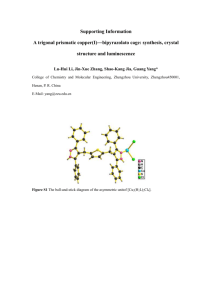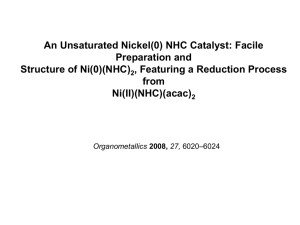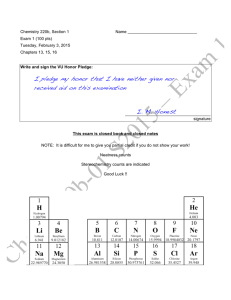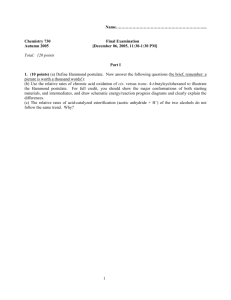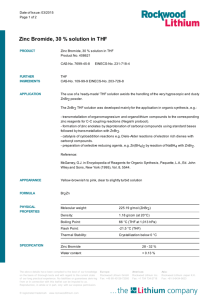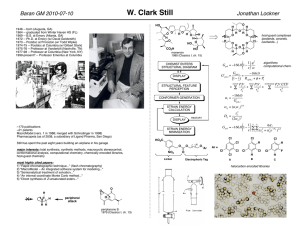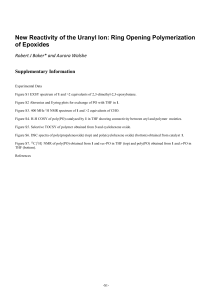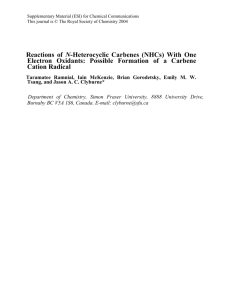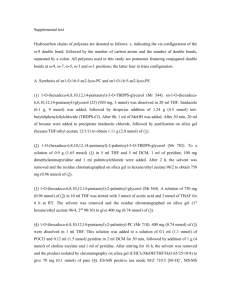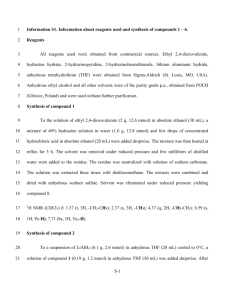Experimental details - Royal Society of Chemistry
advertisement
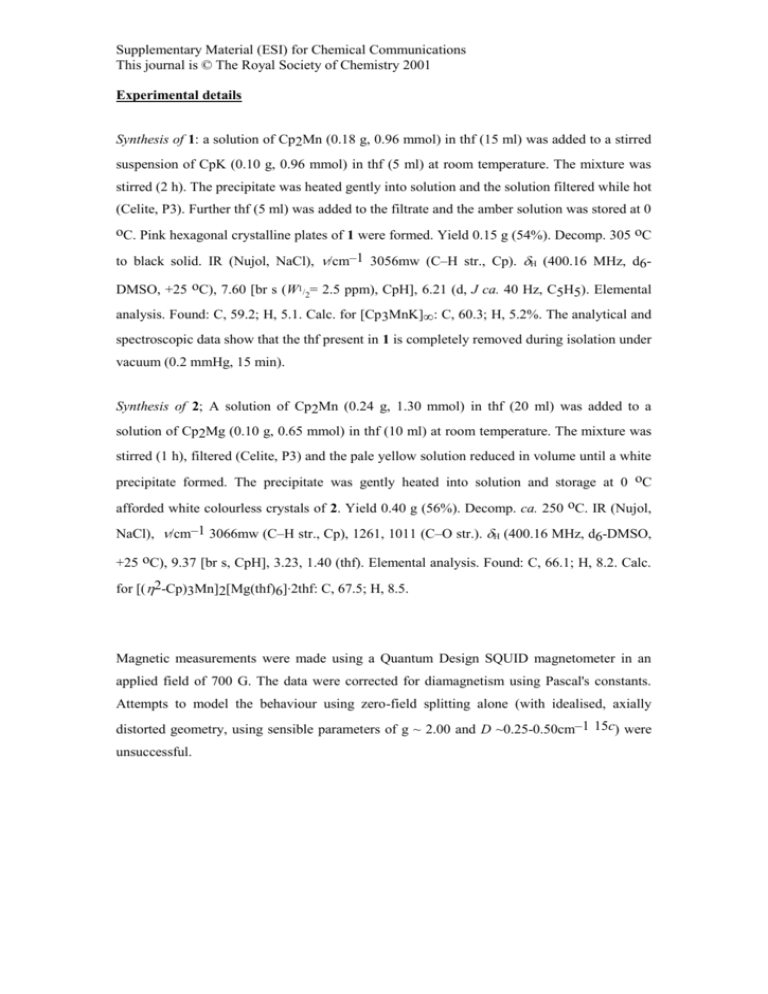
Supplementary Material (ESI) for Chemical Communications This journal is © The Royal Society of Chemistry 2001 Experimental details Synthesis of 1: a solution of Cp2Mn (0.18 g, 0.96 mmol) in thf (15 ml) was added to a stirred suspension of CpK (0.10 g, 0.96 mmol) in thf (5 ml) at room temperature. The mixture was stirred (2 h). The precipitate was heated gently into solution and the solution filtered while hot (Celite, P3). Further thf (5 ml) was added to the filtrate and the amber solution was stored at 0 oC. Pink hexagonal crystalline plates of 1 were formed. Yield 0.15 g (54%). Decomp. 305 oC to black solid. IR (Nujol, NaCl), /cm–1 3056mw (C–H str., Cp). H (400.16 MHz, d6DMSO, +25 oC), 7.60 [br s (W1/2= 2.5 ppm), CpH], 6.21 (d, J ca. 40 Hz, C5H5). Elemental analysis. Found: C, 59.2; H, 5.1. Calc. for [Cp3MnK]∞: C, 60.3; H, 5.2%. The analytical and spectroscopic data show that the thf present in 1 is completely removed during isolation under vacuum (0.2 mmHg, 15 min). Synthesis of 2; A solution of Cp2Mn (0.24 g, 1.30 mmol) in thf (20 ml) was added to a solution of Cp2Mg (0.10 g, 0.65 mmol) in thf (10 ml) at room temperature. The mixture was stirred (1 h), filtered (Celite, P3) and the pale yellow solution reduced in volume until a white precipitate formed. The precipitate was gently heated into solution and storage at 0 oC afforded white colourless crystals of 2. Yield 0.40 g (56%). Decomp. ca. 250 oC. IR (Nujol, NaCl), /cm–1 3066mw (C–H str., Cp), 1261, 1011 (C–O str.). H (400.16 MHz, d6-DMSO, +25 oC), 9.37 [br s, CpH], 3.23, 1.40 (thf). Elemental analysis. Found: C, 66.1; H, 8.2. Calc. for [(2-Cp)3Mn]2[Mg(thf)6].2thf: C, 67.5; H, 8.5. Magnetic measurements were made using a Quantum Design SQUID magnetometer in an applied field of 700 G. The data were corrected for diamagnetism using Pascal's constants. Attempts to model the behaviour using zero-field splitting alone (with idealised, axially distorted geometry, using sensible parameters of g ~ 2.00 and D ~0.25-0.50cm–1 15c) were unsuccessful.
